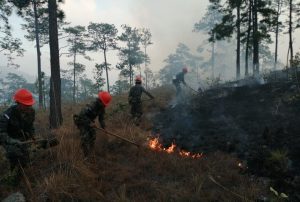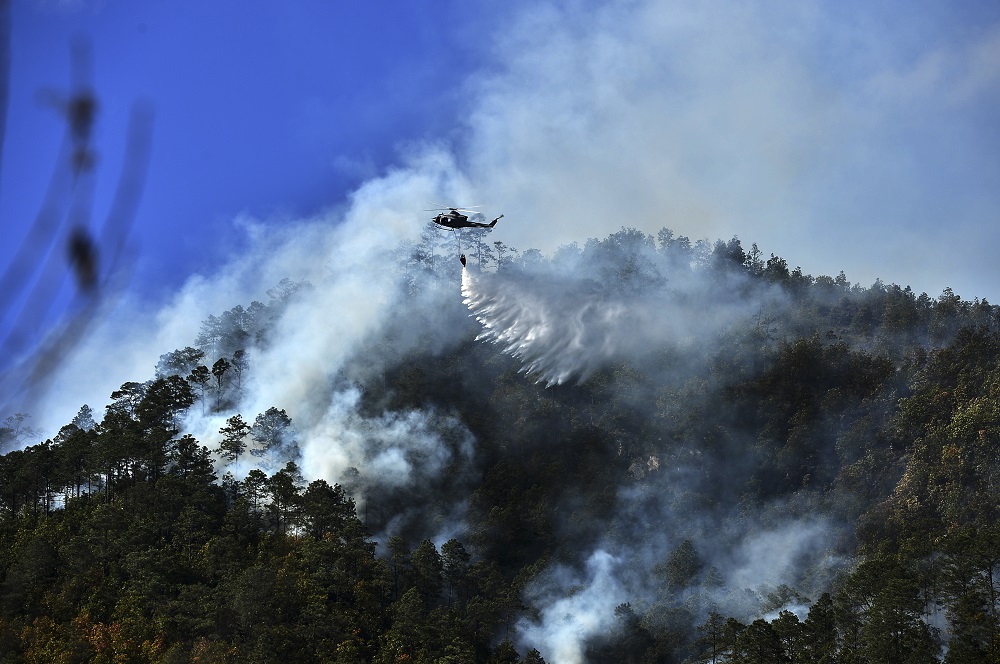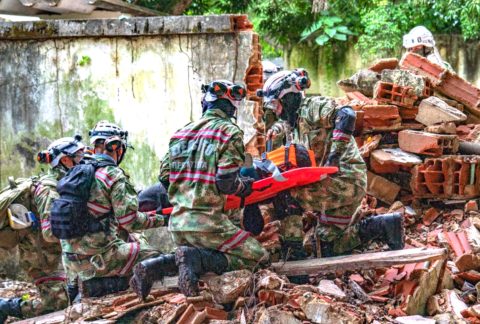About 5,000 elements of the Ecosystem and Environmental Management Support Command (C-9) of the Honduran Armed Forces deployed in different parts of Honduras to fight forest fires that have been devastating the country since early 2020. From January to mid-May, 835 forest fires damaged nearly 55,000 hectares, the Honduran National Institute of Forest Conservation and Development (ICF, in Spanish) reported.
“We are fighting more than six forest fires a day countrywide,” Air Force Colonel Yuri Chávez, director of Public Affairs for the Honduran Armed Forces, told Diálogo. C-9 service members are working side by side with units of the Honduran Fire Department and ICF officers to control the fires, which according to the C-9, are caused mostly by burning for crops.

According to the ICF, the drought and higher temperatures in the last two years have increased forest fires in Honduras. All of Central America, with a forest area of almost 20 million hectares, faces the threat of forest fires, especially during the dry season from February to May.
Sandra Canales, head of the ICF’s forest protection unit, told the international news agency EFE that Honduras loses an average of $1,200 for every hectare of forest affected by fire. “When there is a fire, it doesn’t inflict damage on a specific individual, but on the entire community,” Canales told EFE.
The hardest hit forest areas, according to ICF data, are those in Gracias a Dios department, an area in the country’s east home to one of Honduras’s three biosphere reserves, and those in Francisco Morazán department, where the capital Tegucigalpa is located. In those two areas, 195 fires have destroyed 25,800 hectares since the beginning of 2020.
In addition to the serious environmental consequences, forest fires generate a dense smoke layer that covers many regions in the country, affecting people’s health. Pulmonologist Carlos Aguilar, a physician at the Cardiopulmonary Hospital in Tegucigalpa and former minister of Health, told the Honduran newspaper La Tribuna that the smoke has caused an increase in respiratory diseases, which might worsen the COVID-19 emergency, as respiratory problems are some of the virus symptoms.
With land, air, and sea resources, as well as 170 military detachments for forest protection, the C-9 is highly qualified to respond to these emergencies. “We have a military presence at the national level,” Army Colonel Juan Ramón Hernández, C-9 commander, told Diálogo. “The institution has specialized personnel to carry out activities, such as officers who are also forest engineers, biologists, and personnel certified by the U.S. Forest Service to fight forest fires.”
So far, the C-9 has not required partner nation support to control the fires, said Col. Hernández. “But we have provided support to CFAC [Central American Armed Forces Conference] member nations at their request.”
Since 2018, the C-9 annually coordinates the International Fire Management Course to train CFAC members (El Salvador, Guatemala, Nicaragua, and the Dominican Republic) that face forest fires with similar characteristics. In 2019, U.S. Southern Command provided support for the course with Joint Task Force’s (JTF-Bravo) 612th Air Base Squadron Fire Department. Twice a year, military firefighters also improve their skills and take part in the Central America Sharing Mutual Operational Knowledge and Experiences (CENTAM SMOKE) exercise, taught by JTF-Bravo at its headquarters in Comayagua, Honduras.









